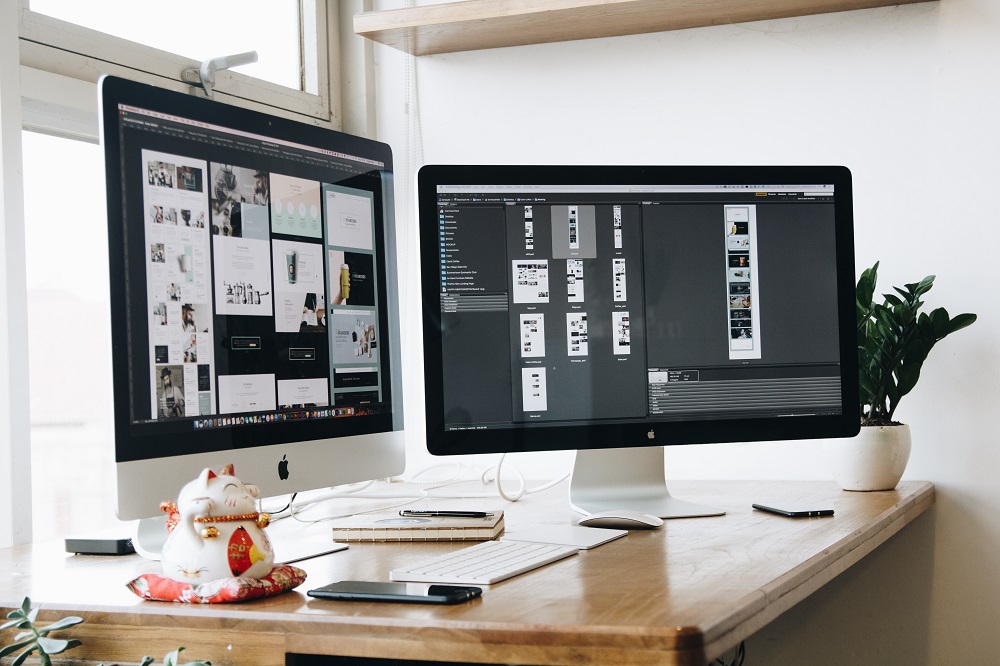As someone who’s been deeply immersed in the world of UX design for years, I’ve had the privilege of witnessing the field evolve and adapt to ever-changing user needs and technological advancements. UX design is a dynamic and exciting space, and staying ahead of the curve is crucial to creating exceptional digital experiences. In this article, I want to share my insights into the UX design trends that are set to shape 2023 and beyond.
1. Voice User Interfaces (VUIs) Will Gain Prominence
Voice technology has been steadily gaining traction, and it’s set to become an integral part of UX design in the coming years. With the proliferation of voice-activated devices like smart speakers and virtual assistants, users are becoming increasingly comfortable with conversational interfaces.
As UX designers, we need to embrace VUIs by creating natural and seamless voice interactions. This means designing for voice commands, understanding context, and providing relevant responses. Expect to see more voice-controlled applications, from home automation to customer support, as VUIs continue to evolve.
2. Augmented Reality (AR) Will Enhance User Experiences
AR technology is poised to transform how users interact with digital content. Whether it’s enhancing real-world experiences with digital overlays or creating immersive gaming and educational apps, AR has the potential to revolutionize UX design.
In 2023 and beyond, we’ll see more UX designers incorporating AR elements into their projects. This includes creating intuitive AR navigation systems, interactive product demonstrations, and location-based AR experiences. The challenge will be to strike the right balance between augmentation and distraction to ensure a seamless user experience.
3. Ethical Design Will Take Center Stage
Ethical considerations have always been important in UX design, but in recent years, they’ve gained even greater prominence. Users are becoming more aware of the ethical implications of digital products and are holding companies accountable for their design decisions.
In the years ahead, ethical design will be a key trend in UX. This involves designing with user privacy, data security, and inclusivity in mind. UX designers will need to navigate the ethical dilemmas posed by emerging technologies like AI and facial recognition. It’s about making conscious choices that prioritize user well-being and societal impact.
4. Personalization Powered by AI
Personalization has been a trend for some time, but it’s evolving rapidly thanks to advances in artificial intelligence. AI-driven personalization goes beyond recommending products or content—it tailors the entire user experience based on individual preferences and behaviors.
Expect to see UX designers leveraging AI algorithms to create highly personalized interfaces. From dynamic content recommendations to adaptive user interfaces, AI will play a significant role in tailoring digital experiences to meet the unique needs of each user.
5. Sustainability and Green Design
Sustainability is no longer just a buzzword; it’s a driving force behind design decisions. Users are increasingly concerned about the environmental impact of digital products, and they expect companies to take sustainability seriously.
UX designers will need to consider the environmental footprint of their designs, from reducing energy consumption to minimizing data storage and optimizing website performance. Green design principles will guide decisions about everything from hosting providers to design aesthetics.
6. Neumorphism and Skeuomorphism
Design trends come and go, and 2023 will see a resurgence of neumorphism and skeuomorphism. Neumorphism combines elements of flat design with subtle gradients and shadows to create interfaces that resemble physical objects. Skeuomorphism, on the other hand, uses realistic textures and elements to mimic real-world objects.
These design styles offer a departure from the flat, minimalistic interfaces that have dominated recent years. UX designers will experiment with these styles to create visually appealing and tactile digital experiences.
7. Immersive Storytelling
Storytelling has always been a powerful tool in UX design, but it’s evolving into something more immersive. Instead of static narratives, we’ll see more interactive and dynamic storytelling experiences that engage users on a deeper level.
Immersive storytelling can take many forms, from gamified narratives to interactive documentaries and virtual reality experiences. UX designers will need to master the art of guiding users through compelling and emotionally resonant stories while maintaining usability and accessibility.
8. Microinteractions for Delight
Microinteractions are those tiny, subtle animations or feedback elements that make a big difference in user experience. They can include anything from a button changing color on hover to a subtle vibration when a message is sent.
In 2023, UX designers will continue to leverage microinteractions to create moments of delight and enhance user engagement. These small but impactful details can leave a lasting impression and contribute to a more enjoyable and memorable user experience.
9. Emphasis on Accessibility and Inclusivity
Accessibility is not just a trend but an ethical imperative. In 2023 and beyond, we’ll see an even greater emphasis on designing digital products that are accessible to everyone, regardless of their abilities. This includes complying with accessibility standards, conducting user testing with individuals with disabilities, and implementing inclusive design principles from the outset.
10. Data Visualization for Insights
Data is abundant, but making sense of it is a challenge. UX designers will increasingly focus on creating intuitive data visualization solutions that help users understand complex information quickly and easily. From interactive dashboards to data-driven storytelling, data visualization will play a pivotal role in aiding decision-making and user engagement.
11. Minimalist Navigation and Micro-Navigation
As digital interfaces become more complex, the need for minimalist navigation becomes more pronounced. Users want streamlined, intuitive navigation that guides them to their desired destinations effortlessly. Expect to see UX designers placing a premium on micro-navigation elements, such as breadcrumbs and contextual menus, to help users navigate complex digital ecosystems.
12. Dark Mode for Reduced Eye Strain
Dark mode has gained popularity for its aesthetic appeal and potential energy savings on OLED screens. However, it also offers a practical benefit—reduced eye strain, especially in low-light conditions. UX designers will continue to provide dark mode options to enhance user comfort and usability.
13. Gesture-Based Interfaces
Gesture-based interfaces, popularized by touchscreens and mobile devices, will continue to evolve. As gesture recognition technology improves, UX designers will explore new ways to incorporate gestures into user interactions. Whether it’s for controlling devices, navigating apps, or playing games, gestures will play a more significant role in UX design.
14. Design Systems and Component Libraries
Efficiency in design is essential, and design systems and component libraries will continue to be essential tools for UX designers. These systems help maintain consistency across digital products and expedite the design process. Expect to see more comprehensive and adaptable design systems in 2023.
15. Emotional Design for User Engagement
Emotional design taps into users’ feelings and creates connections with digital products. In 2023, UX designers will focus on crafting emotionally resonant experiences that go beyond mere functionality. Emotional design elements, such as relatable characters, storytelling, and empathetic interactions, will become integral to user engagement.
Conclusion: Embrace the Future of UX Design
The world of UX design is in a constant state of flux, and staying ahead of the curve is both a challenge and an opportunity. The trends mentioned above are not isolated islands but interconnected facets of an ever-evolving discipline. To thrive as a UX designer in 2023 and beyond, embrace the future with an open mind, a commitment to ethical design, and a passion for creating exceptional digital experiences.
As we navigate the digital landscape of tomorrow, remember that user experience is about more than just aesthetics and functionality—it’s about empathy, inclusivity, and innovation. Embrace these UX design trends, experiment, iterate, and, most importantly, keep the user at the heart of your design process. The future of UX design is a canvas of endless possibilities, waiting for you to paint it with creativity and ingenuity.
ABOUT AUTHOR

Alison Housten
Lorem ipsum dolor sit amet, consectetur adipiscing elit. Ut elit tellus, luctus nec ullam.

RECENT POSTS


